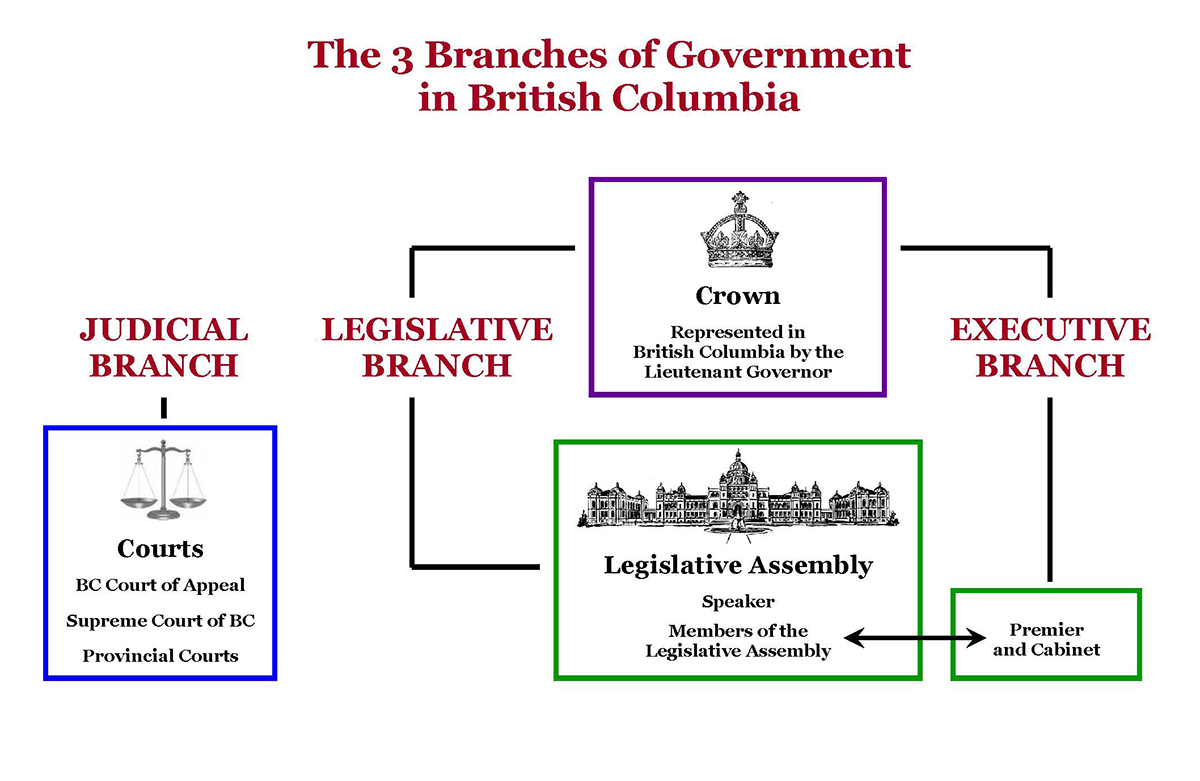In Canada's system of parliamentary democracy, there are three branches of government that guide the governance of both Canada and its provinces: the executive, legislative, and judicial branches. In contrast to the United States, which has a constitution that keeps each of the three branches separate with checks and balances, Canada's executive and legislative branches are heavily intertwined. In British Columbia, for example, the executive branch is led primarily by Members of the Legislative Assembly appointed to Cabinet, who then make important decisions on how the provincial government is run. Cabinet is in turn responsible to the legislative branch (which includes all MLAs) and must have the support of the majority of MLAs if they wish to continue governing. However, the judicial branch enjoys independence from executive and legislative control.
In Canada's constitutional monarchy, the King or his provincial representative, the Lieutenant Governor, has an important symbolic role in each of the three branches. For example, in the judicial branch, it is the Crown that conducts criminal prosecutions, while the Lieutenant Governor is part of both the executive and legislative branches.

